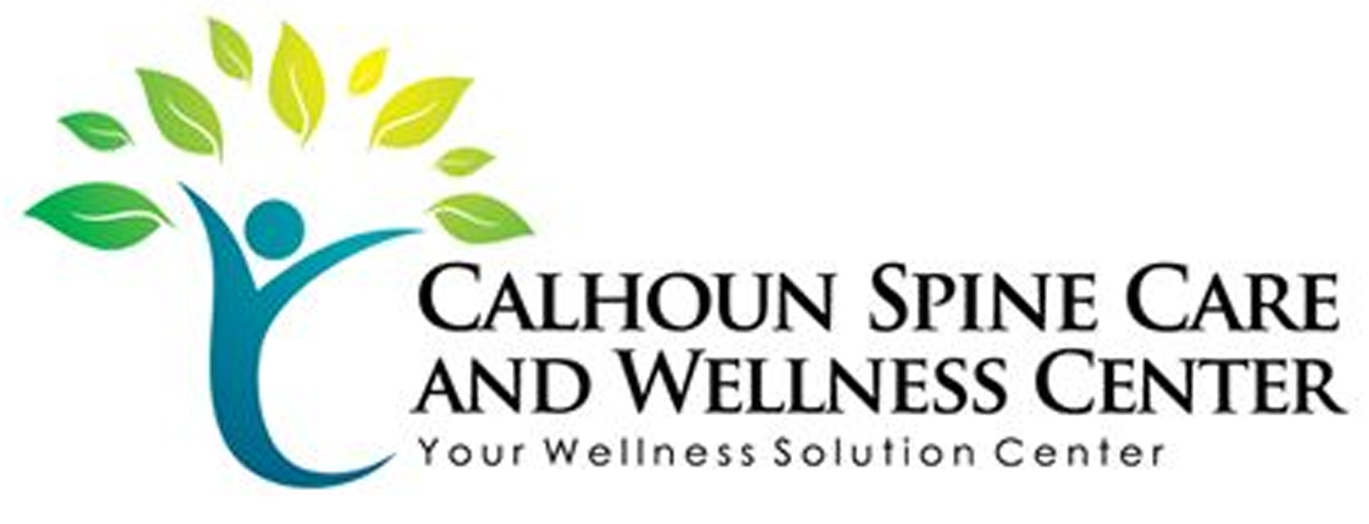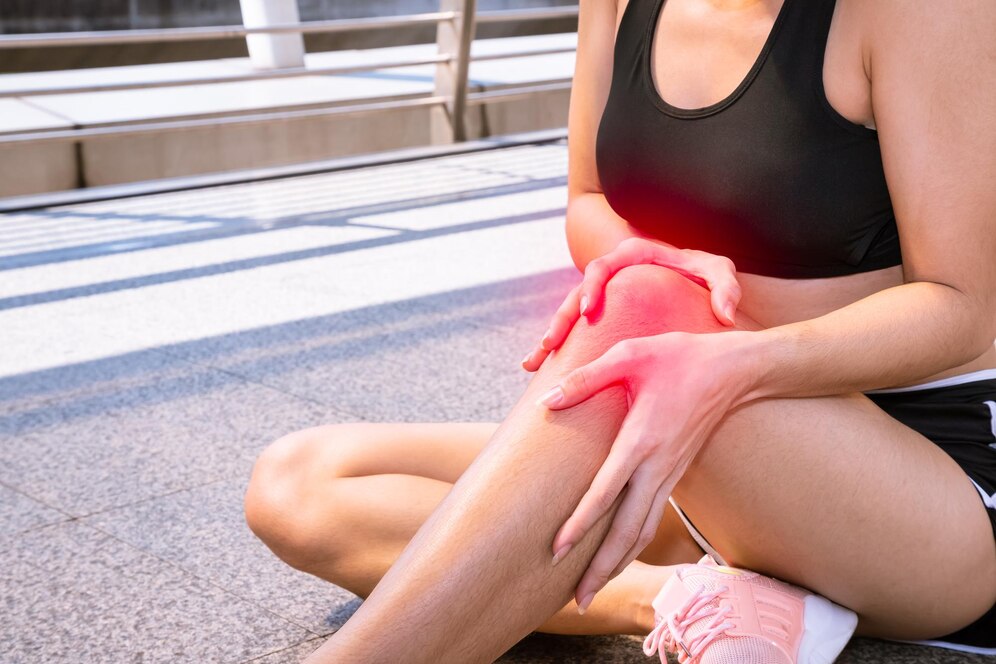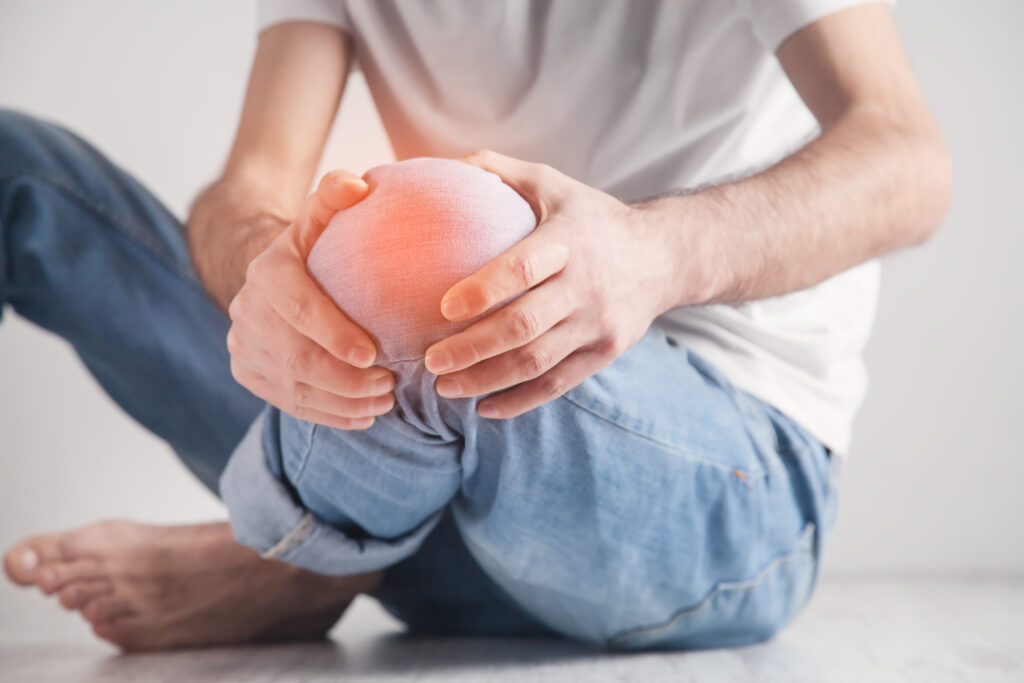If you've ever faced a sports injury in Calhoun, you know how essential it is to find effective relief quickly. You might be wondering about the best local options for recovery, from physical therapy to innovative treatment techniques. Understanding the significance of early diagnosis can make all the difference in your healing journey. But what about the role of nutrition and injury prevention in maintaining your athletic performance? Exploring these aspects could lead you to a more thorough approach to recovery and long-term health.
Common Sports Injuries in Calhoun
When you think of sports injuries, common problems like sprains, strains, and fractures likely come to mind. In Calhoun, athletes of all skill levels encounter these issues regularly.
Sprains, which involve the stretching or tearing of ligaments, often occur during activities that require twisting or sudden changes in direction. You might experience swelling, bruising, or difficulty moving the affected joint, particularly in the ankle or knee.
Strains, on the other hand, affect muscles or tendons. These injuries can happen when you overstretch or overexert yourself, leading to symptoms like pain, muscle spasms, and limited mobility. Calhoun's athletes, especially those participating in high-intensity sports, frequently face this type of injury while pushing their limits.
Fractures, or broken bones, are another common concern. Whether it's a stress fracture from repetitive impact or a more traumatic break from a fall or collision, these injuries can seriously sideline you. You'll likely experience intense pain, swelling, and sometimes even visible deformity in the affected area.
Other notable injuries include tendonitis, which results from repetitive motion, and concussions, particularly in contact sports.
Understanding these common injuries can help you recognize when to seek help and how to prevent them. Remember, taking care of your body and using proper techniques can go a long way in reducing your risk of injury while enjoying your favorite sports in Calhoun.
Importance of Early Diagnosis
Early diagnosis of sports injuries is essential for you to understand the severity of your condition.
By catching issues early, you can prevent long-term damage and optimize your recovery time.
Knowing what you're dealing with allows you to take the right steps toward healing effectively.
Identify Injury Severity
Recognizing the severity of a sports injury is essential for effective treatment and recovery. When you experience pain, swelling, or instability, it's crucial to assess the situation promptly. Understanding whether it's a mild strain, a moderate sprain, or a severe injury like a fracture can guide your next steps.
Start by paying attention to your symptoms. If you can still move the affected area without significant pain, it may indicate a mild injury. However, if you notice swelling, bruising, or an inability to bear weight, it's a sign that you should seek medical attention.
Professional assessment can determine the extent of the damage through physical examinations or imaging tests. Early diagnosis not only helps in choosing the right treatment plan but also minimizes the risk of complications down the line.
Waiting too long can lead to further injury or chronic pain. So, trust your instincts—if something feels off, don't hesitate to consult a healthcare professional. By identifying the severity of your injury early on, you're setting yourself up for a smoother recovery and a quicker return to the activities you love.
Prevent Long-term Damage
A timely diagnosis is essential for preventing long-term damage from sports injuries. When you address an injury quickly, you increase your chances of a full recovery and minimize the risk of ongoing issues. Ignoring symptoms or delaying treatment can lead to chronic pain and impaired performance, making it imperative to seek help right away.
Here are some key reasons why early diagnosis matters:
- Identify the injury's nature: Understanding the specifics helps tailor your treatment.
- Reduce recovery time: The sooner you start treatment, the faster you can return to your sport.
- Prevent complications: Early intervention can stop minor issues from escalating into more serious conditions.
- Maintain athletic performance: Addressing injuries swiftly allows you to stay competitive and avoid setbacks.
- Enhance overall health: Protecting your body from long-term problems leads to better physical well-being.
Optimize Recovery Time
Optimizing your recovery time hinges on how quickly you seek treatment after a sports injury. The sooner you get a professional diagnosis, the better your chances of a swift recovery.
Early intervention can prevent minor issues from escalating into more severe problems that could sideline you for weeks or even months.
When you experience pain or discomfort, don't ignore it. Schedule an appointment right away. A healthcare professional will evaluate your injury, providing you with a clear understanding of the necessary steps for recovery.
This might include rest, physical therapy, or even imaging tests to assess the extent of the damage.
Moreover, early diagnosis allows for personalized treatment plans tailored to your specific needs. These plans can help you regain strength and mobility more effectively, reducing downtime.
Engaging in rehabilitation exercises as soon as you're able also aids in optimizing recovery.
Physical Therapy Options
When dealing with sports injuries, exploring physical therapy options can be essential for your recovery.
Manual therapy techniques can help alleviate pain and improve mobility, while exercise rehabilitation programs focus on strengthening your body.
Manual Therapy Techniques
Manual therapy techniques play an essential role in addressing sports injuries, offering hands-on approaches that can considerably enhance recovery. When you engage in manual therapy, you're not just alleviating pain; you're also improving mobility and promoting healing in your affected areas.
These techniques focus on manipulating muscles, joints, and soft tissues to restore function and reduce discomfort. Here are some key manual therapy methods you might encounter:
- Soft Tissue Mobilization: Targets muscle tightness and improves blood flow.
- Joint Mobilization: Enhances range of motion and relieves stiffness in joints.
- Myofascial Release: Addresses restrictions in the fascia, promoting overall tissue health.
- Trigger Point Therapy: Focuses on specific knots in muscles to relieve tension.
- Craniosacral Therapy: A gentle approach that optimizes the central nervous system's function.
Integrating these techniques into your recovery plan can lead to significant benefits.
Exercise Rehabilitation Programs
After experiencing the benefits of manual therapy techniques, you might find that incorporating exercise rehabilitation programs can further enhance your recovery from sports injuries.
These tailored programs focus on restoring strength, flexibility, and endurance, ensuring you regain ideal function and prevent future injuries.
When you participate in an exercise rehabilitation program, a physical therapist will assess your specific needs and create a personalized plan.
You'll engage in various activities that target the injured area, gradually increasing intensity and complexity as you progress. This approach not only aids in recovery but also helps you build confidence in your physical abilities.
As you commit to these exercises, you'll notice improvements in muscle strength and joint stability.
You'll also benefit from education on proper movement patterns and techniques, which are essential for minimizing the risk of re-injury.
Consistency is key, so make sure to follow your therapist's guidance and stay dedicated to your program.
By actively participating in your rehabilitation, you'll empower yourself to return to your favorite sports and activities stronger than before.
Embrace this phase of recovery; it's a significant step toward long-term health and performance.
Benefits of Chiropractic Care
Chiropractic care offers a range of benefits that can greatly enhance your recovery from sports injuries. When you experience pain or discomfort due to an injury, chiropractic treatments can help restore your body's natural balance and function. By addressing misalignments and improving mobility, chiropractors can facilitate a faster recovery process.
Here are some key benefits you can expect from chiropractic care:
- Pain Relief: Chiropractic adjustments can alleviate pain in your joints and muscles, allowing you to regain your range of motion more quickly.
- Improved Flexibility: Regular chiropractic visits can enhance your flexibility, which is essential for ideal athletic performance and injury prevention.
- Enhanced Recovery Time: By promoting proper healing through spinal adjustments, chiropractic care can greatly reduce your downtime between workouts or competitions.
- Injury Prevention: Chiropractors analyze your biomechanics, helping you identify areas of weakness or imbalance. This proactive approach can lower your chances of future injuries.
- Holistic Approach: Chiropractic care emphasizes a whole-body perspective, combining adjustments with advice on nutrition, exercise, and lifestyle changes to support your overall well-being.
Incorporating chiropractic care into your recovery plan not only addresses immediate pain but also lays the foundation for better performance and long-term health.
With the right chiropractic support, you'll be back to your favorite sport feeling stronger and more resilient than ever.
Innovative Treatment Techniques
When it comes to recovery, you'll find that advanced rehabilitation methods and cutting-edge pain management techniques can make a significant difference.
These innovative treatments not only speed up healing but also enhance your overall performance.
Let's explore how these approaches can help you get back in the game faster and stronger.
Advanced Rehabilitation Methods
Advanced rehabilitation methods have revolutionized the way athletes recover from injuries, offering not just hope but tangible results.
You'll find that these innovative techniques are tailored to your specific needs, helping you regain strength, flexibility, and confidence. By incorporating advanced technologies and personalized approaches, you can enhance your recovery process considerably.
Here are some methods you might encounter:
- Functional Movement Training: Focuses on improving your overall movement patterns to prevent future injuries.
- Aquatic Therapy: Utilizes water resistance to promote healing while reducing strain on your joints.
- Blood Flow Restriction Therapy: Engages low-load exercise with restricted blood flow, promoting muscle growth without heavy weights.
- Cryotherapy: Involves exposure to cold temperatures to reduce inflammation and accelerate healing.
- Laser Therapy: Uses focused light to stimulate cellular repair and enhance tissue healing.
These advanced rehabilitation methods not only speed up your recovery but also empower you to return to your sport stronger than ever.
Trusting the process and your healthcare provider can make all the difference in reaching your goals efficiently.
Cutting-edge Pain Management
Recovery from sports injuries doesn't stop at rehabilitation; effective pain management is an essential part of the journey back to peak performance. You need to explore cutting-edge techniques that can greatly enhance your healing process.
One innovative method is regenerative medicine, which uses your body's own cells to promote healing. Treatments like platelet-rich plasma (PRP) therapy can accelerate tissue repair and reduce pain.
Another approach gaining traction is cryoneurolysis, which involves applying cold to nerves to interrupt pain signals. This technique can provide quick relief, allowing you to focus on your rehab without the constant distraction of pain.
Additionally, neuromodulation therapies, such as transcutaneous electrical nerve stimulation (TENS), can help manage discomfort by altering pain perception through electrical impulses.
Lastly, consider combining these advanced therapies with mindfulness practices, like guided imagery or meditation, to tackle the psychological aspects of pain. This holistic approach empowers you to take control of your recovery.
Role of Rest and Recovery
Rest and recovery play an essential role in healing sports injuries and preventing future setbacks. When you push your body, it's easy to overlook the importance of giving it a break.
Remember, allowing your body to recover isn't just about avoiding pain; it's fundamental for long-term performance and health. Here's how to make the most of your recovery time:
- Listen to Your Body: Pay attention to how you feel. If you're in pain, it's a sign that you need to rest.
- Prioritize Sleep: Quality sleep is crucial for muscle repair and overall recovery. Aim for 7-9 hours each night.
- Incorporate Active Recovery: Low-intensity activities like walking or gentle stretching can promote blood flow and help with healing.
- Use Ice and Elevation: After intense activity, applying ice and elevating the injured area can reduce swelling and speed up recovery.
- Set Realistic Goals: Focus on gradual progress rather than rushing back to your sport. Setting achievable milestones helps you stay motivated without risking re-injury.
Rest isn't just a passive process; it's an active component of your training regimen.
By respecting your body's need for recovery, you'll enhance your performance and reduce the likelihood of future injuries.
Nutritional Support for Healing
While giving your body time to heal is important, what you put into it can make a significant difference in your recovery process. Proper nutrition plays an essential role in repairing tissues and reducing inflammation after a sports injury. By focusing on nutrient-rich foods, you can enhance your healing and get back to your favorite activities sooner.
First, prioritize protein, as it's necessary for muscle repair and recovery. Incorporate lean meats, fish, eggs, legumes, and dairy into your meals. Aim for a good protein source in every meal to support tissue regeneration.
Next, don't forget about healthy fats. Foods like avocados, nuts, seeds, and olive oil provide crucial fatty acids that help reduce inflammation. These fats can contribute to a more balanced recovery and minimize pain associated with injuries.
You should also load up on fruits and vegetables. They're packed with vitamins, minerals, and antioxidants that boost your immune system and combat oxidative stress. Aim for a colorful plate, including leafy greens, berries, and citrus fruits, to maximize these benefits.
Lastly, stay hydrated. Water is essential for nutrient transport and joint lubrication. Drink plenty of fluids, particularly if you're involved in physical therapy or rehabilitation.
Incorporating these nutritional strategies into your daily routine isn't just about healing; it's about promoting overall well-being. By focusing on what you eat, you can actively support your body's recovery process and pave the way for a stronger comeback.
Pain Management Strategies
Managing pain effectively is essential when dealing with sports injuries, as it not only enhances comfort but also facilitates your recovery process. You can adopt several strategies to manage your pain and improve your overall well-being. Here are some practical approaches that you might find helpful:
- Rest and Ice: Take the time to rest your injured area and apply ice packs to reduce swelling and numb the pain. This simple technique can provide immediate relief.
- Compression and Elevation: Use compression wraps and elevate your injured limb to minimize inflammation. This helps keep swelling in check and promotes faster healing.
- Over-the-Counter Medications: Non-prescription pain relievers like ibuprofen or acetaminophen can alleviate discomfort. Just make sure you follow the recommended dosage.
- Physical Therapy: Engaging in physical therapy can be a game-changer. A trained therapist can guide you through exercises tailored to your specific injury, helping to manage pain while restoring function.
- Mindfulness and Relaxation Techniques: Incorporating mindfulness practices such as deep breathing or meditation can help you cope with pain by reducing stress and promoting relaxation.
Preventing Future Injuries
After addressing pain and starting your recovery, focusing on preventing future injuries becomes essential. You don't want to find yourself sidelined again due to a preventable issue. Start by evaluating your current fitness level and setting realistic goals. It's important to tailor your training to your body's unique needs and limitations.
Next, always warm up before any physical activity. Dynamic stretches, light jogging, or sport-specific drills can prepare your muscles and joints for the demands ahead. Cool down afterward, too; static stretching will help maintain flexibility and prevent stiffness.
Incorporating strength training into your routine is also crucial. Stronger muscles support your joints and improve overall stability, reducing the risk of injury. Focus on exercises that target your core, hips, and legs, as these areas are often important for stability in various sports.
Don't forget to pay attention to your technique. Whether you're running, playing soccer, or lifting weights, using proper form can greatly decrease your chances of injury. If you're unsure about your technique, consider seeking feedback from a coach or trainer.
Rest and recovery are equally important. Listen to your body and give yourself adequate time to recover between workouts. Overtraining can lead to fatigue and increase injury risk.
Finally, always wear appropriate gear for your sport, including shoes that provide proper support and cushioning.
Finding Local Specialists
When you're dealing with a sports injury, finding local specialists who understand your needs can make a significant difference in your recovery journey. You want experts who not only comprehend the physical aspects of your injury but also appreciate the demands of your sport.
Here are some tips to help you find the right specialists in Calhoun:
- Research Credentials: Look for professionals with certifications and experience in sports medicine. This guarantees they're equipped to handle your specific injury.
- Read Reviews: Patient testimonials can provide insight into the quality of care and customer service you can expect.
- Ask for Referrals: Reach out to your primary care physician, coaches, or even teammates for recommendations. They might know specialists who've successfully treated similar injuries.
- Check Availability: Confirm the specialists you consider have flexible hours that fit your schedule, especially if you're balancing work or school.
- Evaluate Treatment Approaches: Different specialists may use varied methods. Some might focus on rehabilitation while others might emphasize surgery. Choose one whose approach aligns with your recovery goals.
Conclusion
In Calhoun, finding effective relief for sports injuries is just a step away. By seeking early diagnosis and utilizing physical therapy, chiropractic care, and innovative treatments, you can accelerate your recovery. Don't forget the importance of nutritional support and pain management strategies to enhance your healing. Plus, implementing injury prevention techniques will help you stay in the game longer. Connect with local specialists today, and take charge of your sports health for a stronger tomorrow!



